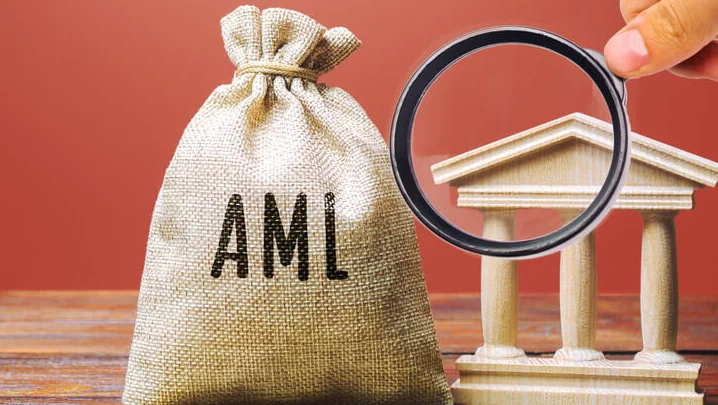What makes an excellent anti-money laundering (AML) checks process? Strong AML practices, as a financial institution, are essential not only for regulatory compliance but also to protect your business from financial criminals. An adequately designed checks regime monitors customers and their transactions against suspicious activity related to money laundering and financing of terrorism.
According to the United Nations Office on Drugs and Crime, money laundering is estimated at 2-5% of global GDP, which comes out at $800 billion-$2 trillion annually.
Thorough AML checks help deter crime and bring these appalling statistics down over time. They further communicate to the customers and regulators that your company treats compliance seriously.
Let’s discuss the main components of a good AML check process.
Customer Due Diligence
Proper identification of customers is essential for AML checks. Your AML officer must be responsible for getting identification documents, verifying customer identity, and screening all new and existing clients against the lists of sanctions under all laws.
Due diligence at onboarding enables setting the scope of future checks that would be required, given the risk profile and transactions of a customer. Thorough, know-your-customer processes lie at the very core of monitoring for suspicious activity.
Ongoing Monitoring
Once accounts are opened, compliance requires ongoing monitoring of customer activity. The AML Officer has to remain watchful for patterns in transactions and review any unusual activity that falls outside expected norms.
Automated transaction monitoring systems make this easier by automatically raising red flags on deviations from pre-set controls informed by AML laws.
They also free up resources for manual AML checks and investigations into higher-risk clients that come under surveillance.
Reports in 2024 have indicated that making use of modern monitoring technologies can reduce false positives by up to 60%, thus improving operational efficiency.
Transaction Monitoring Systems
Sophisticated transaction monitoring systems form an essential part of a robust process of all checks. Such systems, powered by AI-driven analytics, would continue to evaluate the inflowing activities against risk parameters.
They would immediately flag prohibitively large transactions, suspicious fund transfers, or irregular movements between unrelated accounts. This will give all officers an early view of transactions likely to be reviewed within the scope of AML checks for that customer.
The global AML software market was approximately $1.2 billion in 2023 alone, indicating an enhanced reliance on technological solutions in the financial sector.
Bonus: Looking for a way to implement an AML compliance program at your financial institution effectively? Consult with our compliance experts today.
Risk Assessment
An appropriate AML check procedure involves categorizing each customer in terms of inherent money laundering and terrorist financing risks.
An AML officer makes preliminary risk assessments, informed by the scope of all checks, and reassesses the occurrence of events, such as transaction behavior.
High-risk clients undergo more enhanced due diligence and closer monitoring within the framework of the name check process. Geographies, sources of wealth, and kinds of services used help determine the level of risk.
Proper risk assessment ensures that specific customers, not one-size-fits-all, receive appropriate levels of scrutiny.
In 2023, those sectors that remain strictly monitored due to their high risk for illicit activities include cryptocurrencies and real estate.
Record Keeping
During the same check process, proper record-keeping remains very important for compliance purposes with regulatory provisions. A filing should be kept that houses all customer IDs and all the application details that are collected as a part of the KYC process.
Real-time transaction monitoring records, investigation, and corroborating evidence should also be appropriately filed and stored. A documented scope of all checks performed and the conclusions drawn is kept.
This systematic record retention will facilitate future review and help reconstruct an AML check process if required by the compliance authorities.
Reports from the industry in 2024 show that companies investing in continuous AML training reduce compliance breaches by up to 40%.
Training
Regular training keeps all employees informed and up to date on the latest AML check process, including best practices for implementing robust AML checks.
Given that methods of money laundering evolve, staff must be able to recognize changing patterns of suspicious activity.
Staff at all levels need to understand their role in strengthening defenses while also recognizing how their work contributes to the end goal of the overall AML check process. Only with ongoing education are employees fully able to support compliance efforts.
Audits
Organizations periodically audit their AML check process to test its effectiveness by following compliance protocols. Internal audits review the robustness of the implemented checks. On the other hand, the external audit is an independent review.
Both forms of audits enable an organization to find deficiencies in its existing processes, check them, and make improvements. It is testing transactions, risk assessments, investigations, and record-keeping that will make up the core of how an auditor assesses whether robust AML checks are working effectively to meet the requirements of regulatory and risk-based expectations. Recommendations then strengthen anti-money laundering compliance.
Having an understanding of the critical components of a robust AML checks process is a perfect way to begin enhancing your defenses against financial crime. Please contact us to discuss how to bring about the best solution for your business.
Read more unique news and latest blogs visit printerwall .

Aretha Davis, the wordsmith extraordinaire, weaves enchanting tales with her pen and keyboard. A renowned blogger and writer, her captivating prose transports readers to realms unknown. Join her literary journey and be swept away by the magic of her words.
